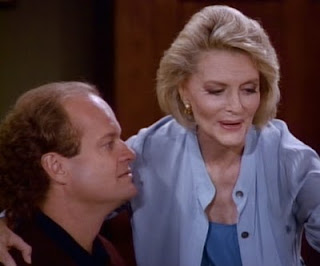
It’s rare and remarkable to see a film accomplish exactly what it sets out to do. CREEPSHOW was the first collaboration between Stephen King and George A. Romero, both pretty close to the top of their respective games in 1982. They were united by their shared love of E.C. Comics, the publisher famous for its lurid crime, sci-fi, and (especially) horror comics that got the industry into a heap of trouble in the early Fifties; this homage to the forgotten and verboten titles came long after British studio Amicus’ adaptation of the original stories in TALES FROM THE CRYPT and VAULT OF HORROR, but long before HBO’s CRYPT TV series (to say nothing of TALES FROM THE HOOD.)
And it’s dead-on, not just a great homage but a genuinely good movie to boot. Anthologies can be hard to do well on film, horror anthologies especially, but CREEPSHOW, among other things, benefits from having only one writer and one director. The gap between quality of segments isn’t huge, though some are more effective than others, and the tone doesn’t bump up and down like you’d expect it too. It’s goofy and broad and campy, but that doesn’t stop it being genuinely scary when it needs to be.
CREEPSHOW presents itself as an actual horror comic, torn from the hands of young Billy (Joe King, son of Stephen) by an uncaring father (Tom Atkins, uncredited) and thrown into the trash, its pages blown open by the wind to show us the lurid contents. The first segment, “Father’s Day”, takes place at a mansion where the daughters of a terrible, verbally abusive father have their yearly reunion, one of them hiding a secret. It’s one of the simpler stories and doesn’t work quite so well, but it’s short, and is followed by “Something to Tide You Over”, which by itself makes the movie worth watching. Leslie Nielsen, cast gloriously against type, plays Richard Vickers, a jovial jealous husband who’s uncovered an affair between his wife (a very briefly seen Gaylen Ross from DAWN OF THE DEAD) and young Harry Wentworth (Ted Danson, not quite cast against type). Richard’s a video enthusiast, and has planned a uniquely high-tech form of revenge, dragging the two lovers out to the beach, burying them up to their necks in sand, and waiting for the tide to come in as they watch each other on video monitors. It’s a fiendish and brutal idea, but as always in these stories, there are unexpected consequences.
“The Lonesome Death of Jordy Verill” is a weird comic tale, starring King himself as a simple-minded hayseed who comes across a meteor and suffers a particularly bizarre fate. It’s full of cartoony images and slapstick, and though the result isn’t really a comedy classic, it’s fun just beacuse of the tone it establishes. “They’re Creeping Up On You” is a gruesome morality play about a greedy landlord (E. G. Marshall) who suffers a Howard Hughes-level obsession with cleanliness and a phobia of bugs. So, while he sits inside his high-tech, sterile living quarters, evicting poor tenants and letting others suffer, cockroaches start to show up, and of course, when you see them, there are always more. Finally, “The Crate” is an absolutely ingenious monster story, starring Hal Holbrook as a henpecked husband and Adrienne Barbeau as his alcoholic wife, both at a university where a discovery in the basement leads to mayhem and intrigue.
None of this is the least bit subtle; the characters are drawn broadly, with easy-to-identify traits performed at high volume by skilled character actors. It’s the sort of thing that looks easy, but actually takes a lot of focus to work. A writer’s instinct is to create nuanced and multilayered figures, but first they have to establish strong central traits, and... well, I have a problem with this at least, and if King and Romero err on the side of caricature, the thing about caricatures is that you remember them.
Pacing is always the big problem with anthologies, because there’s rarely an overarching narrative. CREEPSHOW, as said, gets its weakest story out of the way early, though that may not be by design (for all I know King and Romero thought that was their best bit.) The grimmer stories alternate with the more comical, and individually each story is just about the right length to not overstay its welcome. Some of the “scare” moments are drawn out, emulating comic panels with artsy backgrounds and garish lighting; at times it breaks the illusion the stories create, but those moments are brief.
The cast is enthusiastic, with some genuinely great turns here and there. Nielsen dominates “Something to Tide You Over”, surprisingly low-key in his sociopathy, though it’s also interesting to see Danson in a dramatic role. The interplay between the cast in “The Crate” is also pretty impressive; arguably they manage to keep the characters grounded despite the fact that it’s as much a satire of academia as it is a monsterfest.
This is a film where things just work. The stories are developed just enough, the campiness is embraced but not overdone, and the enthusiasm that King and Romero clearly have for the source material translates into an energy that ties the disparate stories together as much as the actual framing device. For all its ghoulish excess, the film is disciplined and skilfully made. It’s not perfect, but it hits a lot more than it misses, and you can tell that both writer and director cared a lot about getting it right. It’s a joy to watch the masters at work.
Written by Stephen King
Directed by George A. Romero
Grade: A-



